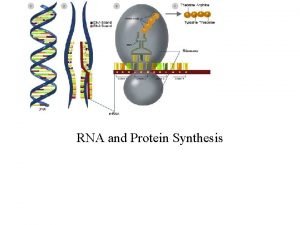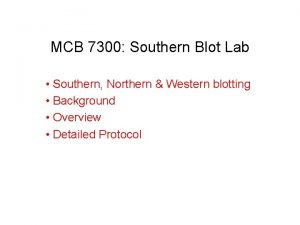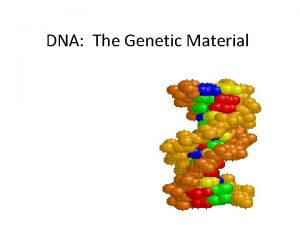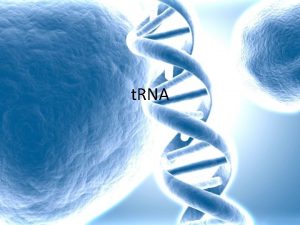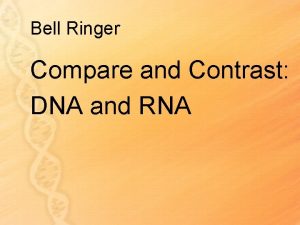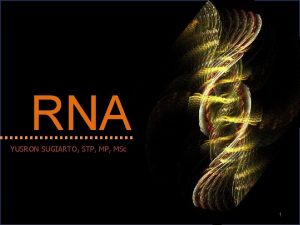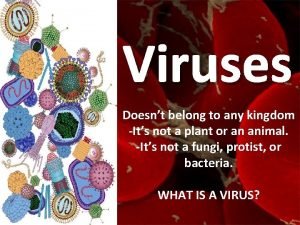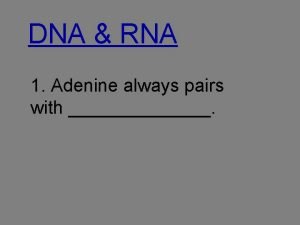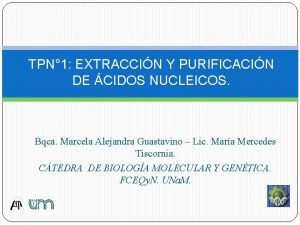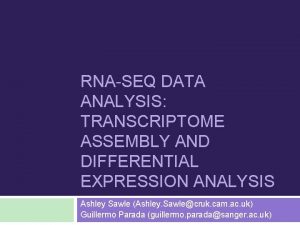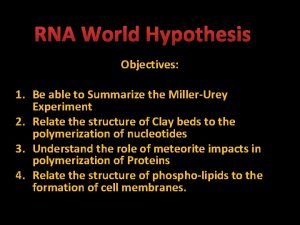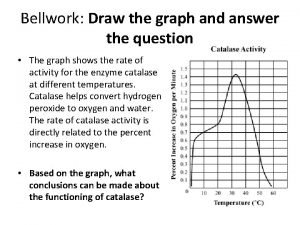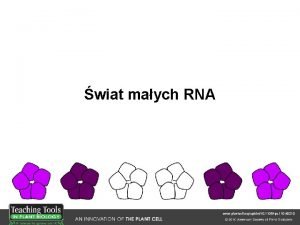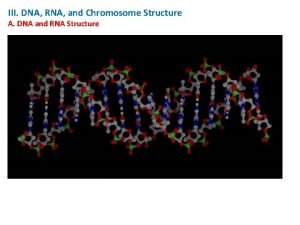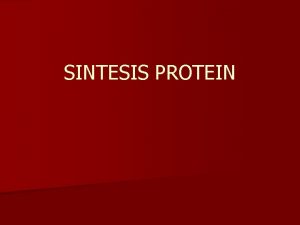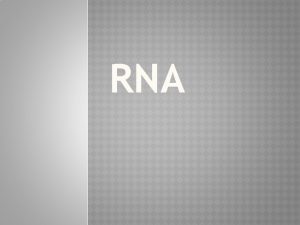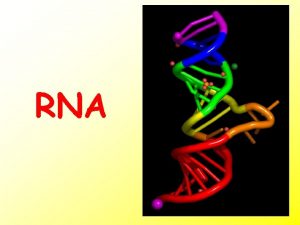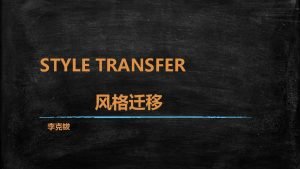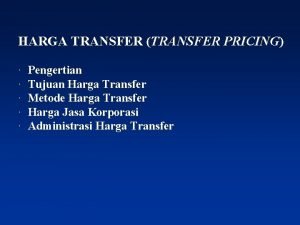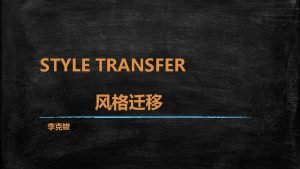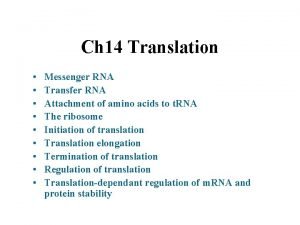t RNA t RNA Transfer RNA t RNA















- Slides: 15

t. RNA

t. RNA • Transfer RNA (t. RNA) is a small molecule, existing as a singlestrand that is folded into a clover-leaf shape.

t. RNA • The role of t. RNA is to bring the amino acids to a ribosome where protein synthesis is taking place. (more on this later)

14. 2 Protein Synthesis 1 Transcription & Splicing

Learning Objectives • How is the code within DNA copied into a molecule of m. RNA? • What is pre-m. RNA? • What are introns and exons?

Protein Synthesis • Last lesson we covered the basics of protein synthesis, the role of RNA and the Genetic Code. • This lesson we introduce protein synthesis as a 2 -step process. Transcription C U C A G Translation

Protein Synthesis • There are 2 processes involved in protein synthesis. 1. Transcription The production of m. RNA by using DNA as a template. A length of DNA (a gene) is transcribed into a m. RNA molecule. 2. Translation Translating the base sequence of the m. RNA molecule into an amino acid sequence. This occurs at a ribosome.

The 1 st of the 2 steps is Transcription. This is a summary. G A nucleus C U C C T cytoplasm G A G G DNA C C A U

The previous slide was a summary of what happens overall in transcription. There actually a number of enzymes involved in transcription, and the full process is detailed next. . .

RNA polymerase DNA helicase dna When RNA polymerase reaches a particular sequence of bases on the DNA (stop triplet!), it detaches, and the production of pre-m. RNA is complete.

1 st Step - Transcription • DNA helicase (an enzyme) unwinds a section of DNA (gene) that is required for protein synthesis. • It does this by breaking the hydrogen bonds between bases in the middle of the double helix. • RNA polymerase (an enzyme) attaches to the start of one of the newly exposed template strands, and begins join complementary RNA nucleotides it. • This forms a molecule called pre-m. RNA. • The synthesised pre-m. RNA will then leave the nucleus through a nuclear pore. • Once the RNA polymerase has detached, the DNA can rewind, forming hydrogen bonds between its bases.

So why is it called pre-m. RNA? ! Is all of the DNA within your cells useful? i. e. Does it all code for proteins? NO! Only 2% of the DNA in your cells is ‘coding DNA. ’ The other 98% is ‘non-coding. ’

So a gene is riddled with non-coding DNA. . . • Imagine a gene is laid out in front of you. • You know around 98% of it is useless, so how do you go about extracting the right bits in order to get the instructions you need to make a protein? Template Strand of DNA (a gene) Transcription (production of pre-m. RNA

Template Strand of DNA (a gene) The coding sections are called EXONS. The NON-coding sections are called INTRONS. Transcription (production of pre-m. RNA Once the useful exons are removed from pre-m. RNA, they are spliced together to form a final m. RNA strand.

Summary • DNA provides the instructions in the form of a long sequence of nucleotides and the bases they possess. • A complementary section of part of this sequence is made in the form of a molecule called pre-m. RNA – this is called transcription. • The pre-m. RNA is modified to m. RNA by removing the base sequences copied from non-functional DNA (introns) – a process called splicing. • The m. RNA is used as a template to which complementary t. RNA molecules attach and the amino acids they carry are linked to form a polypeptide – TRANSLATION.
